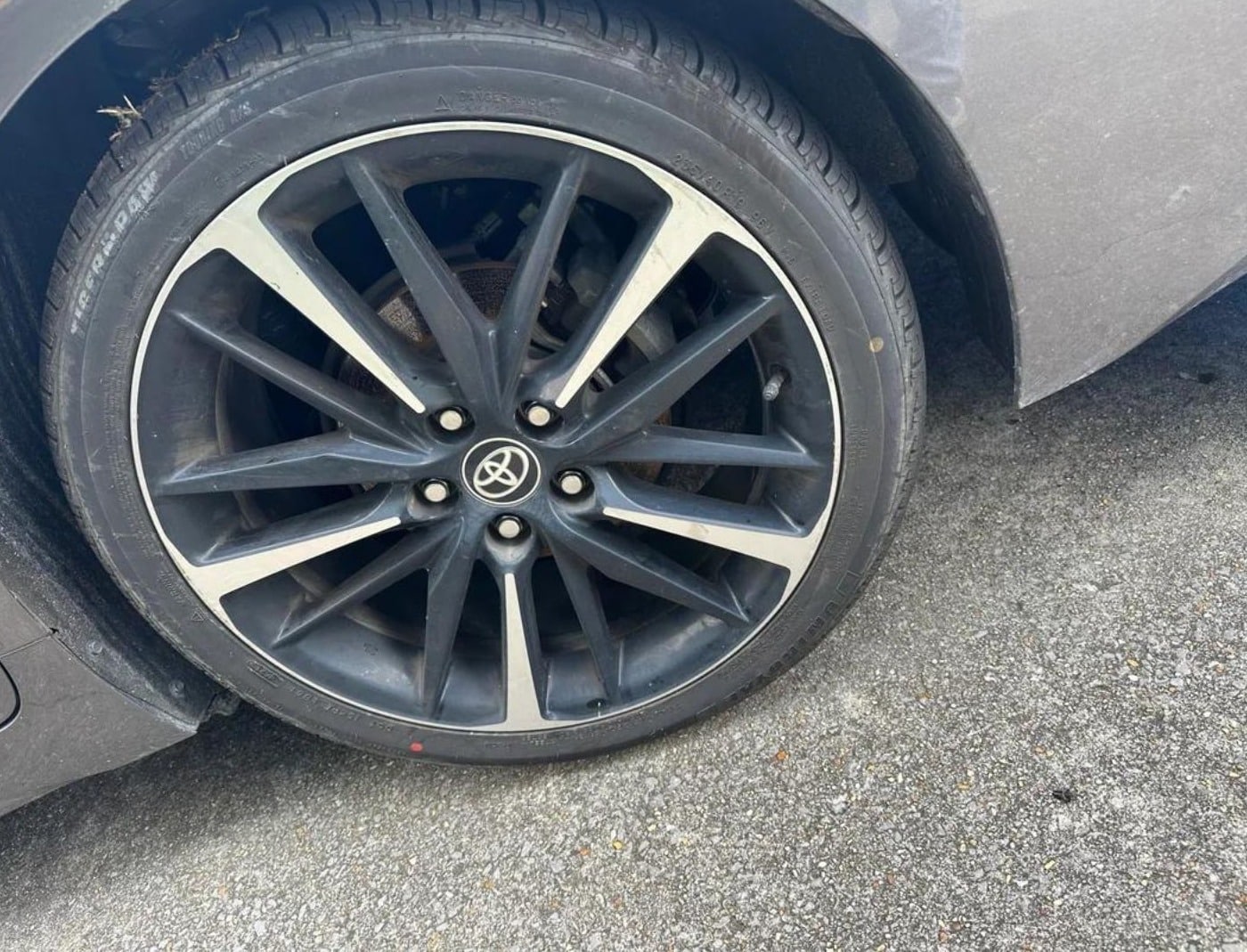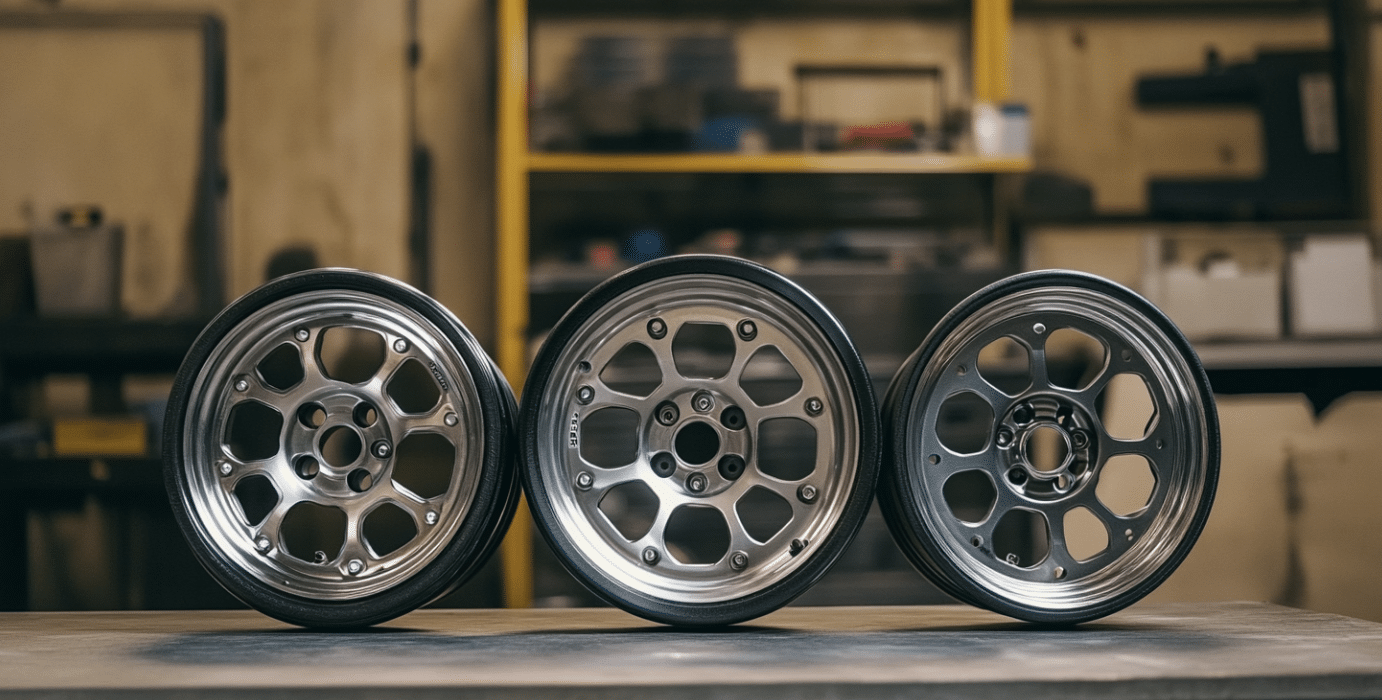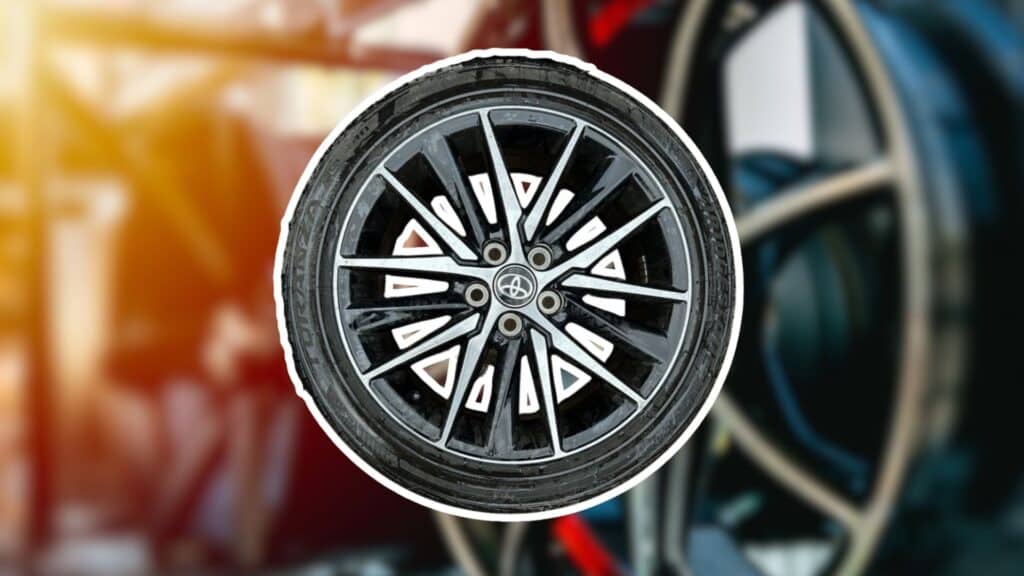Understanding the wheel bolt pattern of a Toyota Camry might seem like a minor detail, but it’s important for vehicle performance and safety. For car enthusiasts and Camry owners, knowledge about wheel bolt patterns can save time and money and prevent potential issues.
This guide highlights the importance of the Toyota Camry wheel bolt pattern, examining its essence and impact on the driving experience.
The discussion covers vital information for Camry owners, from the standard 5×114.3mm pattern to variations across different models and years.
Understanding bolt patterns is key when considering wheel replacements and upgrades or when you are simply curious about vehicle maintenance.
The world of Camry wheel bolt patterns is more mesmerizing than expected. It offers insights into vehicle design, safety, and customization options. Buckle up for an instructive journey into this often-overlooked aspect of the beloved Toyota Camry.
Importance of Bolt Patterns for Your Toyota Camry
Understanding your Toyota Camry’s wheel bolt pattern is important for maintaining its performance and safety. Let’s discuss the specifics of the Toyota Camry wheel bolt pattern and why it matters.
1. Wheel Compatibility
The 5×114.3 bolt pattern determines which wheels will fit your Camry. When shopping for new wheels, this pattern is your first compatibility check. Wheels with a different bolt pattern won’t fit properly on your vehicle.
Wheels that don’t match this bolt pattern can cause unsafe driving conditions and potential damage to your vehicle.
2. Critical Safety Concerns
The bolt pattern of your Toyota Camry’s wheels isn’t just about looks or fitment—it’s a necessary safety feature. Your wheel is securely attached to the vehicle when the bolt pattern matches perfectly.
This secure attachment is important for maintaining control of your car, especially during sudden maneuvers or emergency braking situations.
3. Long-Term Impact

Using wheels with incorrect bolt patterns isn’t just an immediate safety risk—it can have long-lasting effects on your Toyota Camry. Over time, mismatched patterns stress the wheel studs and lug nuts. This added stress can cause these components to wear out faster than normal, potentially leading to:
- Premature failure of wheel studs
- Loosening of lug nuts during driving
- In extreme cases, complete wheel detachment
4. Impact on Vehicle Handling and Performance
Matching the correct bolt pattern ensures safety and directly affects how your Toyota Camry handles on the road. When the wheels are securely and correctly fastened, the vehicle’s weight is evenly distributed across the tires, allowing for optimal traction and stability.
This even distribution is crucial for maintaining proper alignment, ensuring smooth cornering, and enhancing overall driving performance. Mismatched bolt patterns can disrupt this balance, leading to poor handling, increased vibrations, and a less comfortable ride.
5. Importance of Professional Installation

As is the installation process, ensuring your Toyota Camry’s wheels have the correct bolt pattern is urgent. Professional installation ensures that the wheels are mounted correctly, with the appropriate torque applied to the lug nuts.
Proper installation prevents issues like over-tightening or under-tightening, which can lead to damaged threads or loosened nuts over time.
Relying on professional service guarantees that the wheels are the right fit and securely fastened, providing peace of mind on every journey.
6. Proper Stress Distribution
The 5-lug design of the Camry’s bolt pattern helps distribute the stress of the vehicle’s weight and the forces experienced during driving evenly across the wheel. This even distribution is crucial for the wheels’ longevity and the vehicle’s safety.
Toyota Camry Bolt Pattern Variations: A Model-By-Model Guide
While the Toyota Camry is known for its consistency, the wheel bolt pattern can vary across generations, model years, and trims. Understanding these variations is essential when considering wheel replacements or upgrades.
Let’s examine the changes in the Toyota Camry wheel bolt pattern over the years and how to adapt when switching between models.
Model Year Differences in Bolt Patterns

1. Early Camry Models (1983-1991)
Bolt Pattern: 4x100mm
These first- and second-generation Camrys used a four-lug pattern, different from later models.
2. Third Generation (1992-1996)
Bolt Pattern: Transitioned to 5x100mm
This generation marked the shift to a five-lug pattern, improving stability and load distribution.
3. Fourth Generation Onwards (1997-present)
Bolt Pattern: 5×114.3mm
This pattern has become the standard for most Camry models since 1997.
Trim-Specific Variations
In some cases, high-performance or special edition Camry trims might have different bolt patterns to accommodate specific wheel designs or brake systems.
While the general trend follows the above pattern, it’s important to note that some specific trims or special editions might have distinctive bolt patterns:
Performance Trims: Some sportier Camry versions might use different bolt patterns to accommodate larger brakes or specific wheel designs.
Hybrid Models: While most hybrids follow the traditional pattern, always double-check as there might be exceptions.
Choosing the Right Wheels According to Your Bolt Pattern
When upgrading or replacing wheels on your Toyota Camry, compatibility is key. Here’s a quick guide to ensure you choose the right wheels:
Essential Factors to Consider
Bolt Pattern: Match the 5×114.3mm pattern typical for most Camry models.
Wheel Size: Check your Camry’s manual for compatible diameters and widths.
Offset: Ensure the new wheels have the correct offset to fit properly in the wheel well.
Hub Bore: The center hole must fit your Camry’s hub perfectly.
Load Rating: Wheels must be able to support your vehicle’s weight.
Ensuring Compatibility
- Always verify your specific Camry’s bolt pattern before purchasing.
- Consider using a wheel fitment guide or consult with a professional.
- Be cautious with aftermarket wheels; ensure they meet all of Toyota’s specifications.
- Remember, proper fitment affects not just appearance but also safety and performance.
Conclusion
Understanding your Toyota Camry’s wheel bolt pattern is important for maintaining its performance, safety, and appearance.
This article has explored the standard 5×114.3mm pattern common in most modern Camrys, discussed variations across different models and years, and provided a simple guide for measuring your wheel bolt pattern.
Remember, whether replacing a damaged wheel or upgrading to a new style, always ensure an exact match with your Camry’s specifications. Incorrect bolt patterns can lead to serious safety issues and poor vehicle performance.
If you’re ever in doubt, consult with a professional who is familiar with Toyota Camry wheel bolt patterns. By staying informed and attentive to these details, you’ll keep your Camry running smoothly, safely, and stylishly for years.
Frequently Asked Questions (FAQs)
Is the 5×4 5 Bolt Pattern the Same as The 5×114 3?
Yes, 5×4.5 and 5×114.3 are the same bolt pattern. 4.5 inches equals 114.3 mm.
What do Wheel Bolt Pattern Numbers Mean?
Wheel bolt pattern numbers indicate the arrangement and spacing of lug holes on a wheel. They specify the number of bolts and the diameter of the circle they form, ensuring proper wheel fitment.
Are Toyota Rims Interchangeable?
Toyota rims are not universally interchangeable. Compatibility depends on factors like bolt pattern, offset, and center bore. Some models may share compatible rims, but checking specifications before swapping is essential.


